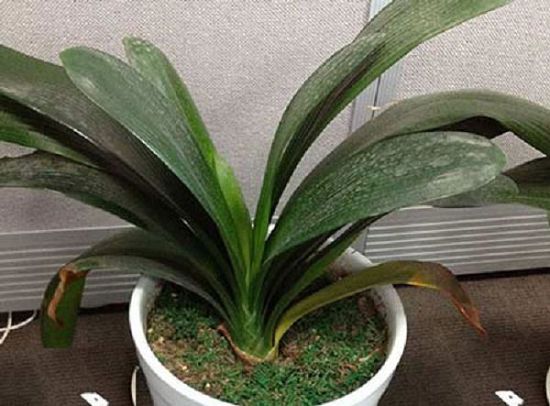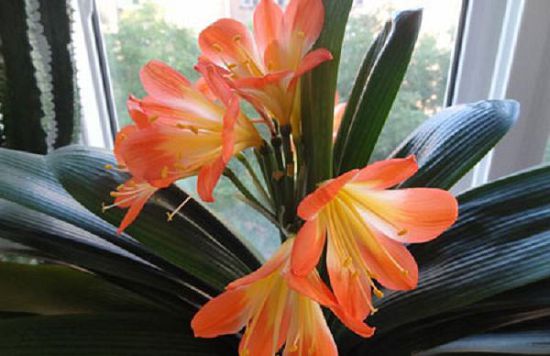What should I do with the rotten leaves of the magnolia? What is it caused by?

Some flower friends will find that Cymbidium rotten leaves, do not know what to do, do not worry, first find out what causes the rotten leaves of Cymbidium, in order to prescribe the right medicine to the case, if you deal with it blindly, you still can not fundamentally solve the problem of rotten leaves.
Here are several situations that lead to the rotten leaves of Cymbidium.
1. When the gentleman orchid is exposed to strong light for a long time, the leaves not only become rough and lose emerald green, but also are often prone to sunburn, making the leaves suddenly yellow and withered, and the serious whole leaves turn yellow, so they are shaded for two or three hours before and after noon in summer. once the leaves have turned yellow, the leaves can be cut off and re-urged.
2. If the fertilizer and water are too big and thick, the leaves are not well cleaned, or if they are infected by mold, it will lead to rotten leaves. The leaves began to rot from the base, heart, or outside of the leaves, and in severe cases, all the leaves rotted away in five or six days. It is necessary to timely control water and apply fertilizer properly to make the basin soil moist up and down. After finding the rotten leaves, cut off the rotten leaves immediately, then sprinkle them with oxytetracycline powder around the rotten leaves, thoroughly disinfect them and put them in a ventilated and transparent place.
3. When the temperature rises to more than 25 ℃, the growth of the gentleman is restrained. If you continue to apply fertilizer, the leaves will grow weak and grow, resulting in unhealthy plants, and even rotting roots and stems. Too much fertilizer will cause the new leaves to curl up suddenly. It is necessary to change the soil or continue to pour water several times so that the thick fertilizer can be washed away and diluted.
4. During the Meiyu period, excessive humidity, poor ventilation and hot temperature will wither the leaf tip and weaken the resistance to disease. Exchange spray with 0.1% carbendazim and topiramate, once every 10 days.
5. Too much watering will cause the root system to rot, and the leaves will gradually wither and fall off from the bottom up. It is necessary to dig out the plant and wash out the soil, cut off the rotten roots, and dry them for four or five days, so that the root system will contract slightly, and then put on the basin again. If half of the water is often watered, the root system will be withered and the leaves will wither and fall off from the bottom up, so it should be watered thoroughly in time.
6. Cymbidium is a fleshy root with weak water absorption capacity, thick leaves and high water content. if the basin soil is too wet or too dry for a long time, it will cause water reversal and leaf tip blackening and rot, so it is appropriate to keep the basin soil dry. What is more important is that whether small, medium or large plants, pouring water on the leaves in the center, or often in the rain, or dripping into the center, will make the new leaves in the center rot, and in serious cases, they will rot, so don't water the orchids on the leaves, especially avoid pouring them into the center leaves.
7. High temperature, sunburn, less Rain Water, dry environment, lack of ventilation, or poor drainage, or application of raw fertilizer will make the leaves scorched yellow or fall off. Use loose and dry soil, apply rotten fermented light fertilizer, and put it in a ventilated and cool environment.
8. The unfermented horse dung or meat bones at the bottom of the basin are easy to produce white nematodes, making the leaves scorched yellow, so it is necessary to change the basin soil and replant.
9. There is a pockmarked macula in the center of the leaf. On the surface, it appears that the leaf is sick and infected, but in fact, there are problems in the root, such as the basin soil is too wet, or the place is stuffy and not ventilated, or the application of raw fertilizer and thick fertilizer will appear the above symptoms. If you fertilize too much, too thick or apply raw fertilizer, you should change the soil immediately, and if it is not placed properly, you should change the place to make the basin soil dry.
10. Due to the mold activity in the basin soil, the leaves were spotted and disinfected with formalin in time. Leaf spots have appeared, which can be wiped with 1000 times oxytetracycline or tobacco stem water soaking solution to control the development of leaf spots.
Related
- Is the orchid suitable for indoor use? Is it good for the body?
- How to prevent the empty root of orchids?
- What to do after the crab claw orchid is withered?
- Why are the leaves of orchids always yellow? Fertilizing and watering.
- Can the root of the gentleman orchid be saved if it is rotten?
- Diagnosis and treatment of cotton-blowing beetle insects in Cymbidium
- There is a way for a gentleman's orchid to rot.
- What is the most suitable temperature and humidity for the orchid?
- How to raise a gentleman's orchid? Cultivation techniques of Cymbidium
- How to prepare the nutritive soil for the cultivation of Cymbidium



